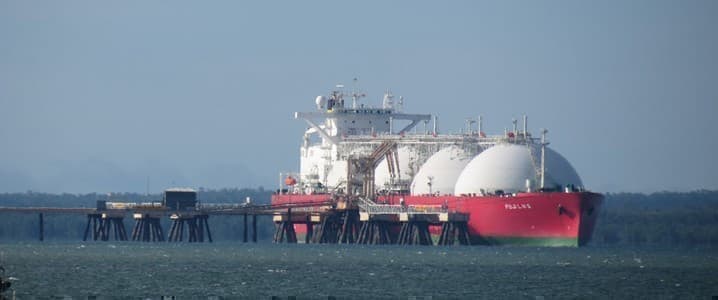Global demand for gas is driving substantial investments in liquefied natural gas production in Africa. Those investments will, if successfully completed, turn the continent into a key supplier of the commodity in the future.
These are some of the outtakes from a presentation by Wood Mackenzie’s upstream research director, Ian Thom, and the presentation comes weeks after a recent forecast by the International Energy Agency that gas demand would peak before 2030.
Peak or growth
In September, the IEA’s head, Fatih Birol, said in an op-ed for the Financial Times that oil and gas demand would both peak before 2030, driven down by alternative sources of energy and electric vehicles.
Speaking about gas specifically, Birol wrote that “This is the result of renewables increasingly outmatching gas for producing electricity, the rise of heat pumps, and Europe’s accelerated shift away from gas following Russia’s invasion of Ukraine.”
Yet out in the real world, European companies recently closed two long-term LNG supply deals with Qatar, suggesting renewables may yet take a while to start outmatching gas for producing electricity.
Heat pumps, while strongly promoted by governments in transition-eager countries, are becoming increasingly controversial because of their significant costs and sometimes questionable performance due to a lack of optimal conditions.
Meanwhile, energy companies have invested some $800 billion in gas projects across Africa, according to Wood Mackenzie’s Thom. The investment cycle featuring the sum began in 2010 and will end in the same year, before which the IEA predicts peak gas demand. And it will result in a substantial increase in Africa’s LNG production capacity.
Per the IEA’s peak gas scenario, much of this capacity would become stranded. Yet, there do not seem to be any fears of that. On the contrary, there are several projects taking longer to complete because of security challenges and that is contributing to a tight gas market that makes prices susceptible to shocks.
Price shocks
There were two recent ones: the first, when offshore gas platform workers at Chevron’s LNG projects went on strike in September and European gas prices jumped, and the second, when Israel told Chevron to close one of the largest offshore gas fields in the country following the massive Hamas attack. Gas prices jumped again even though Europe does not import gas from Israel directly. Related: Most Americans Wouldn’t Buy An Electric Vehicle
Price volatility may be about to get worse, too, according to the head of one of the largest energy traders in the world, Mutsui & Co. In a recent interview with Bloomberg, Kenichi Hori said that even with all the current LNG projects in the pipeline, demand would still surpass supply.
“Announced projects in the world still won’t make up for the supply needed when considering the energy transition that will take several decades,” Hori said, suggesting gas prices might have a bullish future.
This means Africa has a lot of potential as a critical source of new supply, especially for Europe thanks to the proximity between the two continents. There are projects already nearing completion, such as the Tortue floating LNG project off the coast of Senegal and Mauritania, which will next year add 2.4 million tons in annual production capacity to the global total.
Yet there are projects that have been stumbling along the way, such as two facilities in Mozambique—Rovuma LNG and Mozambique LNG—where security issues have delayed work on the LNG facilities.
According to Wood Mac’s Thom, “Rovuma and Mozambique LNG central to a potential doubling of African LNG supply by 2035, there is a risk that exports could flatline longer term if these projects fail to materialize.”
It looks like few outside the International Energy Agency believe in looming peak gas demand. Those who believe gas demand will only grow in the future, meanwhile, are staking billions on it from Qatar to Mozambique, to the U.S. Gulf Coast.
By Irina Slav for Oilprice.com
More Top Reads From Oilprice.com:
- China Defends Belt And Road Initiative Amidst Global Criticisms
- Goldman's Grim Forecast: Shipping Industry Faces Prolonged Downturn
- Oil Markets Underestimating The Risk Of A Middle East Blowout


















